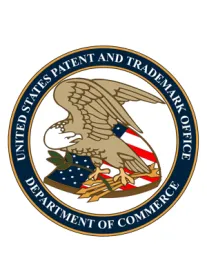The “2014 Interim Guidance on Patent Subject Matter Eligibility” was published by the United States Patent and Trademark Office (USPTO) on Dec. 16. This publication supplements the Preliminary Examination Instructions published on June 25 and supersedes the March 4 USPTO procedures. It applies to “all applications filed before, on or after December 16, 2014.” Therefore, prosecution portfolios should be examined to determine whether new arguments may be offered to the USPTO for pending cases, and cases being prepared should take this guidance into account. It is important to note that the guidance “does not have the force and effect of law,” Fed. Reg. Vol. 79, No. 241, p 74618, 74619. However, USPTO examiners will be following it.
Under the previous guidance, rejections under 35 U.S.C. §101 were broadly applied. Almost all patent applications with any claim element that the USPTO construed as “natural, product of nature, natural phenomenon” (natural) was apparently automatically shuffled into the “not patent eligible” rejection. Often there was no clue provided on what basis the USPTO decided a claim element was natural, and claims were not always considered in their entirety to determine whether they were directed to more than a “judicial exception” to the statute which decreed that under 101.
“any new and useful process, machine, manufacture, or composition of matter, or any new and useful improvement thereof, may obtain a patent therefor…” 35 U.S.C. §101.
There are some encouraging changes in the guidance, for example, fewer limits on patent eligibility. However, this area of patent law is still in a state of flux. The USPTO promises ongoing updates. Comments may be submitted by the public, and a public forum will be held in January 2015.
The basic changes in the new guidance are that (1) the factor-based analysis where an ineligibility factor can outweigh a pro-eligibility factor has been withdrawn and replaced with a two-part analysis; (2) the test for determining whether a claim is directed to a “product of nature” exception is separated from the analysis of whether the claim includes “significantly more” than the exception; and (3) the “markedly different” analysis is no longer limited to structure only, and instead can include functional differences as compared to naturally occurring counterparts in their natural state. This new factor means that a difference in function may now be considered to confer patent eligibility. This will be a major assistance to prosecute biotech, ag-bio and pharmaceutical inventions, where function is often what is important.
The guidance states that a combination of two or more claim elements that exist in nature, may now be patent eligible if the “combination has markedly different characteristics than what exists in nature.” Therefore, patent applications should show that the combination doesn’t exist in nature, or if it does, it is “markedly different.” A problem is that this qualifier is still not well defined, and is subject to argument and interpretation.
A list of “marked differences” does not provide discrete categories, but indicates that many types of characteristics of an invention may be invoked based on various court decisions:
-
biological or pharmaceutical functions or activities;
-
chemical and physical properties;
-
“phenotypes” including function and structural characteristics; and
-
structure and form chemical, genetic or physical.
Hopefully, examiners will follow the directive to “explain why it is an exception, providing reasons why the product does not have markedly different characteristics from its naturally occurring counterpart in its natural state” and ensure that “every claim must be examined individually,” Fed. Reg. P. 74624.
New examples are presented to illustrate applications of the guidance. Examples of two-part analysis are presented.
-
Step 1 checks for compliance with the express scope of the §101 statute.
-
Step 2 determines whether the claim recites a “patent-eligible application” of the judicial exception. The difference now is that emphasis is placed on determining whether a claim is directed to a law of nature or natural phenomenon.
Because all inventions “at some level embody, use, reflect, rest upon or apply a law of natural phenomenon or abstract idea,” Fed. Reg. p. 74622, the focus must be to exclude only those that preclude (preempt) use of a law of nature or natural phenomenon, in other inventions.
A purified or isolated product will be eligible if “there is a resultant change in characteristics sufficient to show a marked difference from the product’s naturally occurring counterpart.”
The key to convincing the USPTO that an invention has “markedly difference characteristics” is illustrating that the “nature-based” limitations in the claim, or the claimed combination does not recite an exception. To show “markedly different” for process claims, there is only a need to show the process claim is substantially the same as a product claim (e.g. “a method of providing an apple”).
In preparing new patent applications, §101 rejections should be expected and countered in the actual application. Description of differences between the invention and nature, and explanation of why there is no preempting use of natural materials and laws, and demonstrations of improvements are recommended. Multipronged arguments embedded in the patent application may forestall §101 rejections by the USPTO.



 />i
/>i
